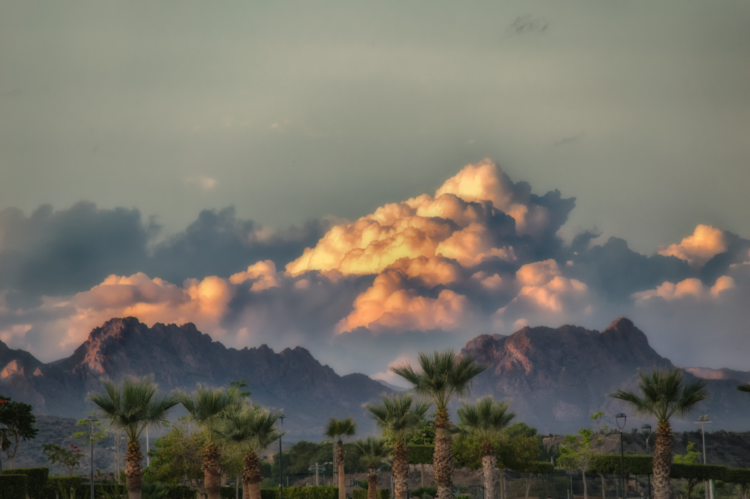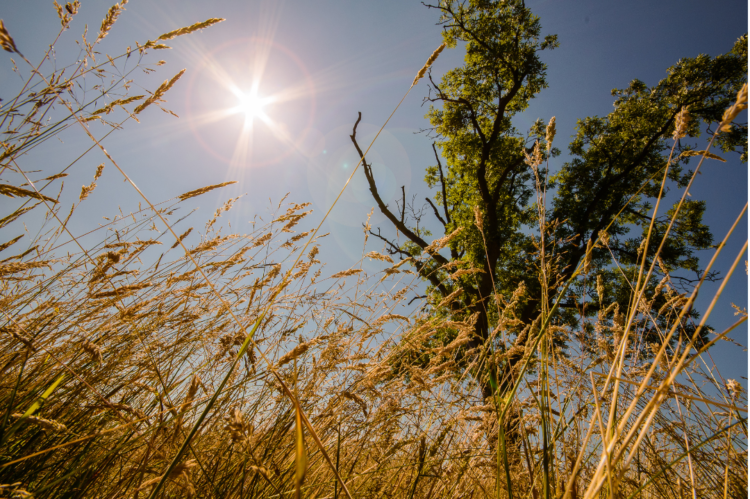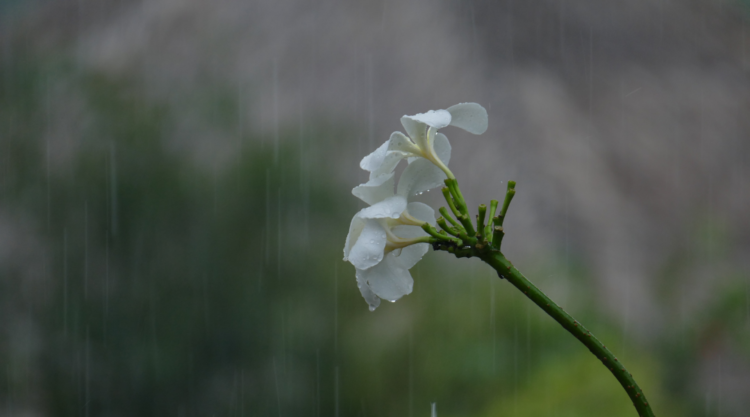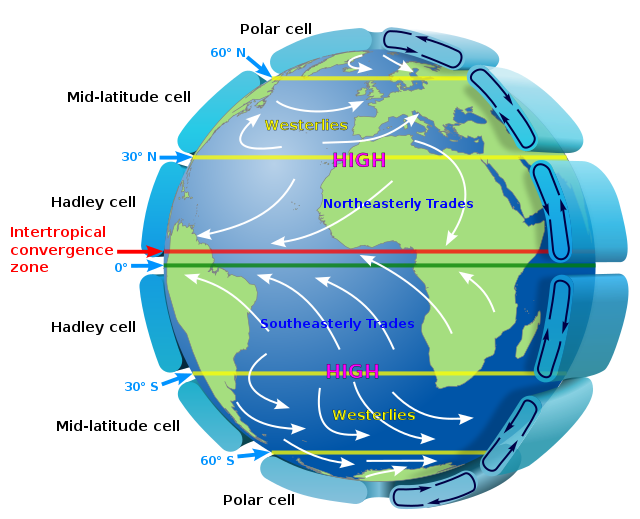As you may have read in my post on describing outdoor places, biomes are the largest category for classifying the natural environment. From scorching deserts and frozen tundra to the endless blue of the marine pelagic zone, biomes highlight differences in nature at a huge scale. But what makes them different? What makes some biomes cold and others hot, or some dry and others wet? In this The Deep Stuff post, we’ll explore what makes terrestrial (land-based) biomes tick.
Some basic vocab
Let’s start with some basic vocabulary.
Latitude is one of the most important factors influencing Earth’s biomes. Latitude is the distance from a given location to the nearest point on the equator. The equator is an imaginary line running East-West around the “middle” of the earth. This is the main “horizontal” line on most maps or globes. Higher latitudes are places that are further from the equator, and lower latitudes are ones that are closer.
In other words, the further North or South a place is, the higher its latitude. Equatorial countries like Ecuador (check out that name!), Gabon, Kenya, and Indonesia are all at low latitudes. On the other hand, countries with high latitudes include New Zealand, Argentina, Chile, Greenland, Russia, and Chile.

Since the earth is more-or-less shaped like a ball, people describe latitude in degrees, rather than miles or kilometers. If you wanted to, though, you could convert those degrees into a straight-line distance with an online converter or some quick geometry.
Now that we’ve got some understanding of these terms, let’s see why they’re important in nature.
Latitude, climate, and the non-living environment

If you Googled (or better yet, have visited) any of the places I mentioned above, you might have noticed some patterns. You can find some similar habitats in some of those places. Ecuador, Gabon, and Kenya are hot, humid places with plenty of tropical rainforest. New Zealand, Russia, and Chile are quite a bit colder and have more pronounced seasons. This is no coincidence. In fact, their latitude determines some key conditions that influence the type of environments you find in a place:
- Temperature – How much of the sun’s energy is reaching that spot?
- Moisture – How much water is available in the environment?
- Seasonality – Do temperature and moisture vary throughout over time or are they pretty-much the same all year long?
The three of these factors combined make up a region’s climate.
Temperature

The orientation of the Earth with respect to the sun makes for these different combinations. First, areas at lower latitudes receive the sun’s radiation more directly. To be more specific, low latitudes are lined up with the way the Earth orbits the sun. This means that the heat and light from the sun are shining more directly on the tropics, while they hit Northern and Southern latitudes at an angle. That makes a big difference for the amount of heat hitting Earth’s surface.
Moisture

Next, water moves around the planet based on sun-based differences in temperature. Though the physics of this gets a bit hairy, the result is clear. Water gets lifted up as water vapor from certain regions and whisked away to other ones, where it gets dumped as rain. This results in some areas being very dry, and others being very wet, in alternating bands. For example: the tropics around the equator consist of wetter ecosystems. At the next higher latitude, you’ll find deserts and Mediterranean systems, which are drier. Next, temperate forests and rainforests, which are wetter, and so on up (or down) to the poles.

Seasonality

Finally, Earth’s tilt on its axis means that areas at higher latitudes are different distances from the sun as our planet makes its way around. Thus, throughout the year, areas that are further from the equator experience changes that we call seasons. When those higher latitudes are tilted toward the sun, they are warmer, and we have summer weather. When they’re tilted away, we get winter. Zones at low latitudes get mild seasons if any.
Climate and biomes
Finally, climate is a major influence on the biomes of a region. Different combinations of the three climate conditions create different biomes. For example, deserts and tropical rainforests are really hot (get a lot of direct solar energy), but very different amounts of water. On the other hand, temperate and boreal forests have obvious seasons, but temperate forests are warmer and get more direct solar radiation.
Climatic condition determines what wildlife can live in an area. As a result, particular living communities of interacting species (ecosystems) exist there. Areas without very much water typically have few trees. For example, savannas, grasslands, and deserts. By contrast, regions that get really cold only harbor plants and animals that can survive the deep-freeze.
So, to recap:
- Latitude influences climate
- Temperature, moisture, and seasonality are three major components of climate
- Climate conditions determine what plants, animals, and other living things can live in a place
- The combination of climate and living things make up the biome
These various factors help determine the local biome, which then supports a certain set of habitats. This incredible variety is part of what makes for the incredible, beautiful variety of life on this planet. So get out and see some biomes!
Thanks for reading about biomes!
What kind of biomes do you want to experience most? Personally, I’ve been dying to visit more deserts. If you have additional questions about ecosystems, biomes, and habitats, please let me know in the comments. As always, if you’d like to get in touch or have a suggestion for another post, send a message via the contact page.
